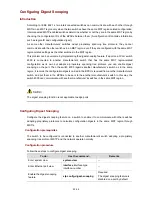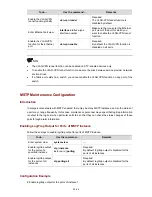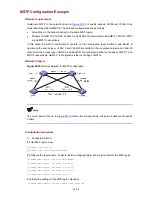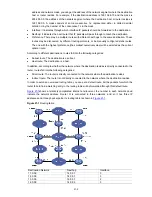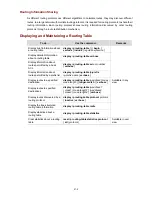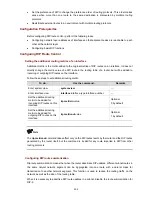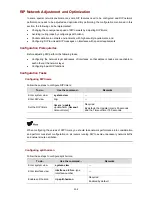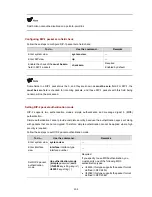
15.0.0.0 17.0.0.2
1
16.0.0.0 16.0.0.2
2
17.0.0.0 17.0.0.1
1
Routing Protocol Overview
Static
all, stable
c routing is suitable for large networks. It is
her requirements on the system than static routing,
but also occupies a certain amount of network resources.
Classification of Dynamic Routing Protocols
Opera
z
Gateway Protocols (IGPs): Work within an autonomous system, typically including RIP,
OSPF, and IS-IS.
Exterior Gateway Protocols (EGPs): Work between autonomous systems. The most popular one is
Routing and Dynamic Routing
Static routing is easy to configure and requires less system resources. It works well in sm
networks with simple topologies. It cannot adapt itself to any network topology change automatically so
that you must perform routing configuration again whenever the network topology changes.
Dynamic routing is based on dynamic routing protocols, which can detect network topology changes
and recalculate the routes accordingly. Therefore, dynami
complicated to configure, and it not only imposes hig
Dynamic routing protocols can be classified based on the following standards:
tional scope
Interior
z
BGP.
An autonomous system refers to a group of routers that share the same route policy and work under the
same administration.
R
i
PF and IS-IS.
above two types of routing algorithms lie in the way routes are
T
IM-SM and PIM-DM.
cols. For information on multicast routing protocols, refer
to the part discussing
Multicast
.
out ng algorithm
z
Distance-vector protocols: RIP and BGP. BGP is also considered a path-vector protocol.
z
Link-state protocols: OS
The main differences between the
discovered and calculated.
ype of the destination address
z
Unicast routing protocols: RIP, OSPF, BGP, and IS-IS.
z
Multicast routing protocols: P
This chapter focuses on unicast routing proto
21-3


